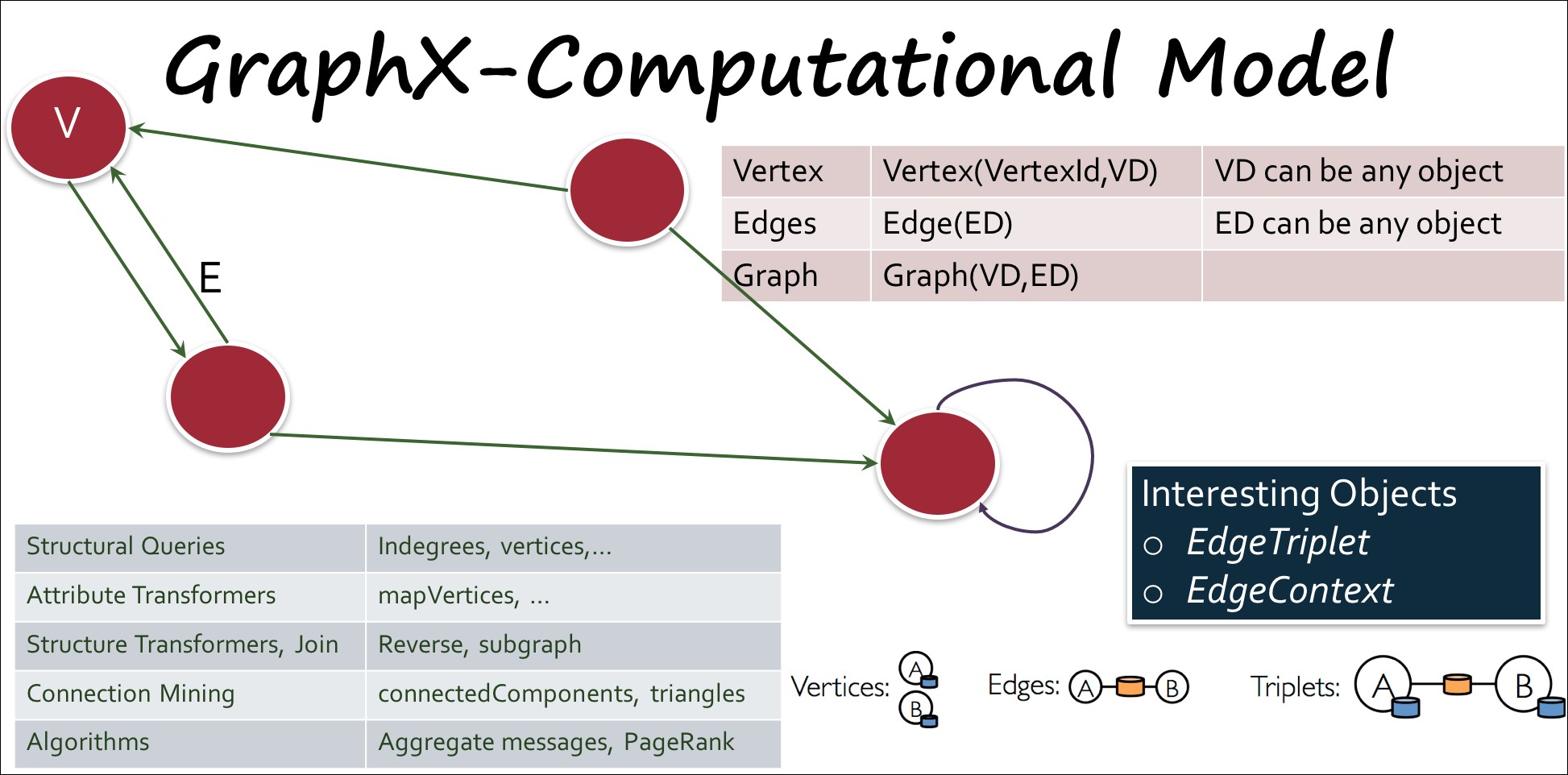GraphX - computational model
Before we dive into creating a graph and applying algorithms, we need to understand the computational model. Needless to say, GraphX has a rich yet simple computational model:
It consists of vertices connected by edges.
It is a property graph, which means the vertices and edges can have arbitrary objects as properties, and most importantly, these properties are visible to the APIs.
It is also a directed multigraph, meaning the edges have a direction and there can be any number of edges between the vertices. This is important to note down, because some of the algorithms can be tricky when faced with loops and cyclic graphs. GraphX has APIs that will come in handy, for example, the removeSelfEdges method will be helpful when you want to remove loops.
With this model, many kinds of graphs can be created, including bipartite and tripartite graphs (for example, the Users-Tags-Web pages). The following diagram illustrates the computational model of GraphX:

A vertex consists...



























































